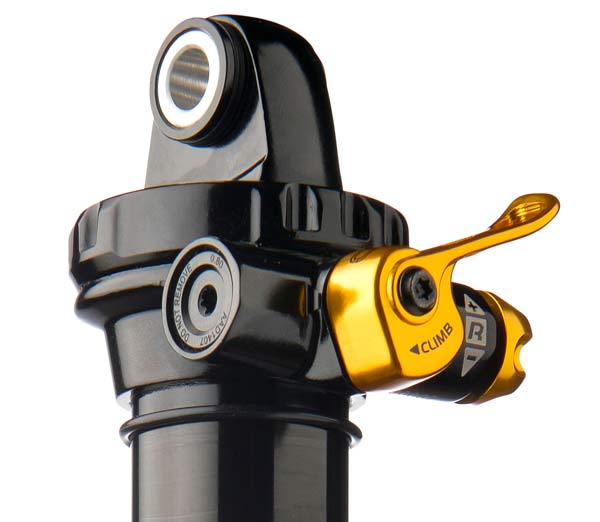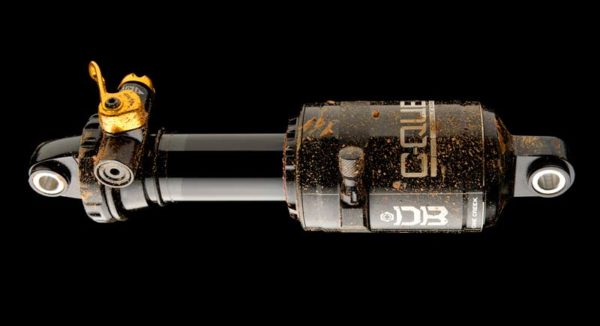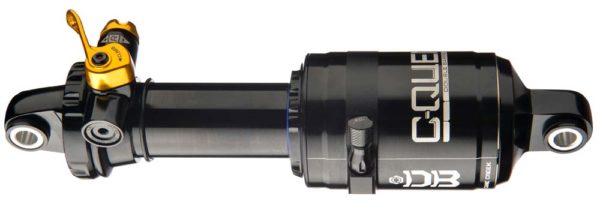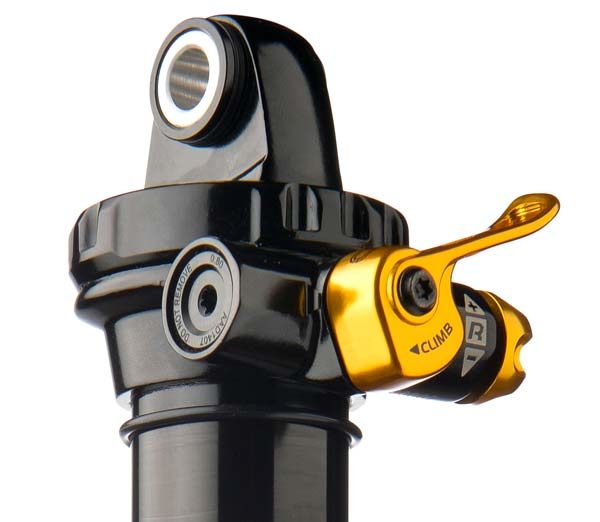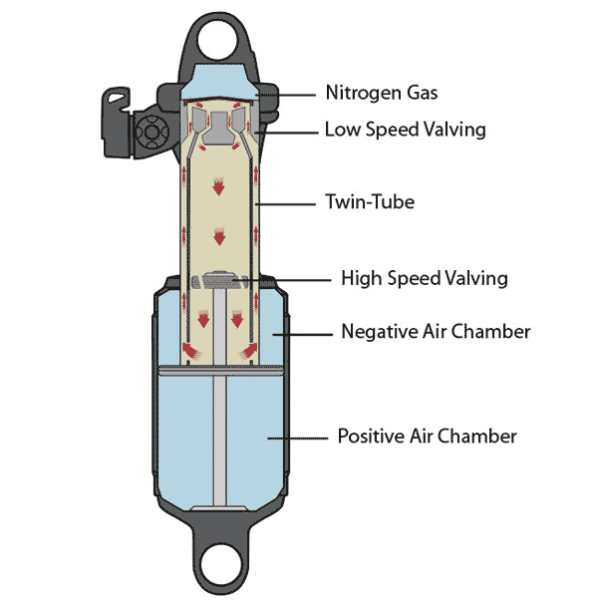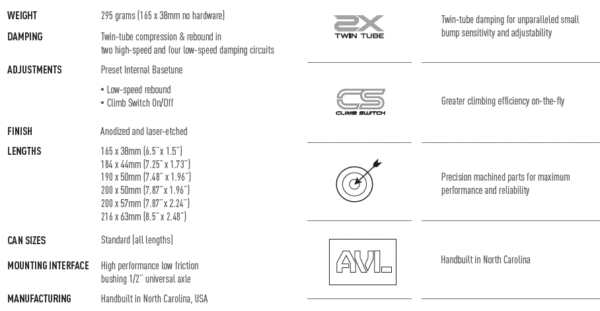While the Cane Creek Double Barrel shock lineup has been one of the premiere aftermarket upgrades for many enduro, all-mountain and downhill riders, it’s could also be seen as intimidating for the less technical savvy mountain biker that just wants to get out and ride.
For those folks, the Cane Creek C-Quent takes most of the internal performance and packages it into a pre-tuned shock for OEM placement. Meaning, you get the distinct high and low speed compression and rebound circuits of the DB, but they’re already factory set for optimum performance for your new bike…
Anytime you buy a complete bike, you’re almost certainly getting a rear shock that’s been tuned by the suspension manufacturer based on the bike’s leverage ratio and intended use. That’s called a “Base Tune”, and for most riders, it’s more than sufficient. Even with the high end bikes that come with a DB shock, Cane Creek says most riders don’t mess with the Base Tune because it ends up working very well. With that in mind, they created the C-Quent, which does away with all external adjustments beyond the Climb Switch and low speed rebound.
The Climb Switch severely limits compression, providing an instantly stiffer platform for climbing or sprinting. It also tweaks the rebound damping slightly, which is full explained in this post. It’s not a full lockout, but in our testing it’s been plenty effective in firming up the rear end without giving up the traction benefits full suspension offers.
The key difference (beyond the lack of external controls) is that the high speed compression circuit now resides on the piston as a shim stack, rather than inside a smaller circuit at the top of the shock. Otherwise, the design is very similar, relying on a large air chamber and nitrogen charged IFP to keep you flowing smoothly over the trail.
Because it loses most of the controls, it comes in relatively light at just 295g, compared to 509g for a DB Air with Climb Switch. It’ll be available as OEM only, so look for it on 2017 bikes coming later this summer.
